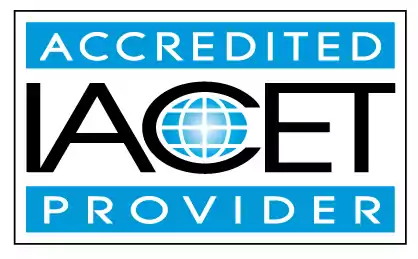Describe ways to analyze classrooms for an anti-bias approach.
Learn how to analyze classrooms for an anti-bias approach in early childhood education and child care centers. Explore ways to identify and contemplate bias, and discover anti-bias approaches that support working with children and families.Trainings incorporating this outcome
CDA Subject Areas
Proficiency Level
Target Audience
Topic Areas
States
Alabama (6) Alaska (6) Alberta (8) Arizona (6) Arkansas (4) Australia (6) California (6) Colorado (6) Connecticut (6) Delaware (6) District of Columbia (6) Florida (6) Georgia (6) Hawaii (6) Idaho (6) Illinois (3) Indiana (6) Iowa (6) Jamaica (6) Kansas (6) Kentucky (3) Louisiana (6) Maine (6) Manitoba (6) Maryland (7) Massachusetts (5) Michigan (6) Minnesota (6) Mississippi (6) Missouri (3) Montana (6) Nebraska (5) Nevada (4) New Hampshire (6) New Jersey (4) New Mexico (6) New York (5) Newfoundland and Labrador (6) North Carolina (4) North Dakota (6) Nova Scotia (6) Ohio (6) Oklahoma (6) Ontario (4) Oregon (5) Pennsylvania (5) Prince Edward Island (6) Puerto Rico (6) Quebec (6) Rhode Island (6) Saskatchewan (6) South Carolina (3) South Dakota (6) Tennessee (4) Texas (5) Thailand (6) United Kingdom (6) Utah (6) Vermont (6) Virgin Islands (6) Virginia (6) Washington (6) West Virginia (6) Wisconsin (6) Wyoming (5)
120 hours courses
45 hours courses
40 hours courses
30 hours courses
3 hours courses
Related Outcomes
- Describe the various ways teachers can address challenging behaviors in the classroom.
- Define active play in the early childhood classroom and describe its benefits for young children.
- Describe the stages of grief and the different ways children react to grief and stress.
- Describe how language is one of the many ways through which culture affects development.
- Recognize ways to incorporate learning activities in the classroom that would normalize breastfeeding and additional resources for a childcare program.
- Describe an environment through video observation of a 3, 4, and/or 5 year classroom
- Describe a classroom management plan that promotes positive reinforcement and clear expectations for the school-age setting
- Describe strategies to encourage positive behaviors in the classroom.
- Describe positive discipline strategies to use in the classroom.
- Describe a classroom management plan that promotes positive reinforcement, clear expectations, and consistent implementation.
- Give examples of ways for families to be included and represented in the classroom, even when they are not physically present.
- Recognize the importance of demonstrating respect for the diversity of all children and youth and families’ culture, language, and religion in all interactions (anti-bias and cultural responsiveness techniques).
- List examples ways to incorporate inclusion and equity in the classroom
- Describe the benefits of an outdoor classroom.
- Describe the benefits of an outdoor classroom.
- Teachers will demonstrate a variety of ways for families to be represented in their classrooms when they are not physically present.
- Describe the meaning of positive discipline in the classroom.
- Describe approaches to coaching.
- Define differentiated instruction in early childhood education and describe how it may look in the classroom.
- Describe ways that coaches and mentors can observe and assess coachees and mentees.
Related Articles
- Culturally Sensitive Classrooms
- Promoting Diversity, Equity, and Inclusion in Child Care: A Guide to Culturally Responsive Teaching
- ASQ Online Developmental Screening for Enhanced Child Development
- The Power of Play: Unleashing Potential in Early Childhood Education
- The Power of Play
- ChildCareEd Now Offering Montessori Training Courses for Early Childhood Educators
- School Days, Fun Ways: Designing a Curriculum for the Big Kids
- Why ‘Why’ is the Magic Word: How Early Education Turns Questions into Quests
- What Separates a Good New York CDA Portfolio from a Great One?
- How Do I Create an Inclusive Environment for Children with Diverse Needs?
- 🗣️ How Can I Talk to Parents About Bullying Without Blame or Conflict?🤝
- 🌍 How Can Culture, Communication, and Collaboration Improve Child Assessment?
- 🌎 How Do I Support Diverse Families While Honoring Their Culture and Values?💜
 12 CEUs
12 CEUs